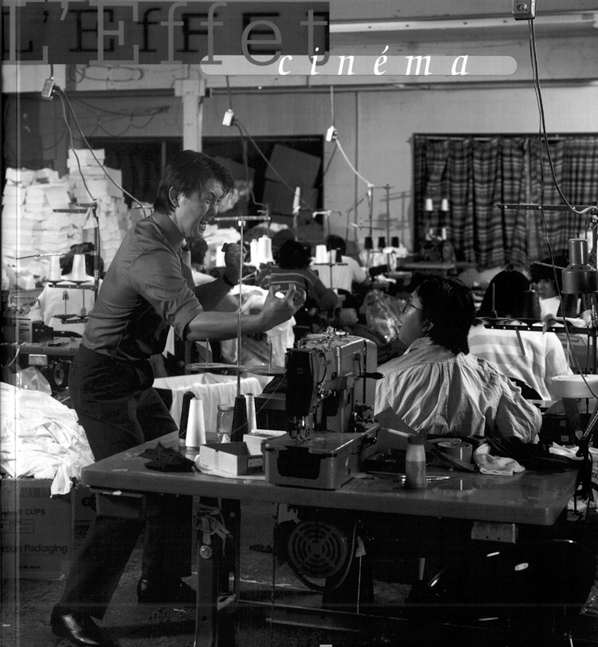[Summer 1996]
Musée d’art contemporain de Montréal, 1995, 58 pp.
Reproductions in black and white and colour.
The catalogue L’Effet cinéma, addendum to the recent exhibition of Canadian, American, and European artists, outlines some of the theoretical issues that emerge from a consideration of the presence of cinematographic elements in contemporary art. As the doubly encoded title suggests, this has as much to do with the deployment of aspects of the cinematic apparatus by artworks as it dœs with the influence on and/or contamination of art by the filmic medium. The question of aesthetic pollution is suggested in the introduction, which explains the curator’s privileging of narrative cinema, stated to be the type most familiar to spectators. However, the distinction between mass media and the aesthetic sphere is dissimulated in the postmodern strategy of equivocation. Contemporary art incorporates cinema; the museum responds by defining the “cinematographic.”
The main feature of the catalogue is an engaging essay by Olivier Asselin. Identifying two exemplary uses of the cinematographic in artworks, Asselin proposes the paradigms of minimalism and pop art as modalities relating largely to aspects of reception in the first case, and image construction in the latter. What is similar in both instances is the way in which the fictional (narrative) space of a given work creates an experience of “dilated” time. Images appear as illusions; narratives are fragmented, in suspense. Although the contexts of reception – museum and film theatre – were briefly mentioned in the catalogue, a greater elaboration of this subject could have extended the inquiry in productive ways.

